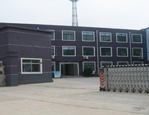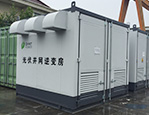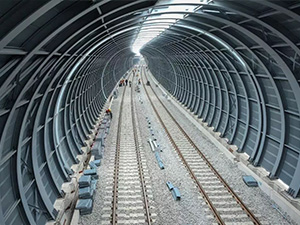A case of rail transit engineering
Publish date:2018-06-26 Views:727

Engineering Introduction:
In order to reduce the influence of the noise produced by the subway to the nearby commercial area, the residents and the public places of culture and education, this project adopts a combination sound barrier with a split sound absorption body and a safe glass screen. The design has fully taken into account the impact safety of the urban light rail, the subway, the impact safety of the traffic vehicles and the all-weather antisepsis. It has beautiful appearance, exquisite production, convenient transportation, easy installation, low cost and long service life. It is especially suitable for the anti noise use of high speed road and urban light rail and subway. It is the most ideal sound insulation and noise reduction facility in modern cities.
Sound barrier: height is generally between 1m-5m, covering the effective area, the average noise reduction reaches 10-15dB (A) (125Hz-40000Hz, 1/3 octave), up to 20dB (A).
Product features:
1, sound absorption performance: NRC > 0.75.
2.Mechanical properties and strength properties: tensile strength > 60MPa, elongation 4.7%~5.3%, hardness 4.0HW.
3.wind load: the basic wind pressure is 0.55kN/, the ground roughness category is B class, the 1.0-1.5mm galvanized plate is used to suppress the groove through the automatic production line to increase the strength. It is the anti 10-12 typhoon of the product and the compressive 300kg/㎡.
4.anticorrosion treatment: hot dip zinc should be carried out after the surface treatment of the component. The average thickness of the coating is not less than 80um. After hot galvanizing, electrostatic spraying is carried out. The average thickness of the coating is not less than 80um. The quality of the galvanizing and coating is in conformity with the corrosion protection technical condition of the highway traffic engineering steel (GB/ T18226-2000).
Application scope:
Traffic noise control for expressways, high-speed railways, rail transit and viaducts.











